SignalPlus Macro Analysis Special Edition: Liberation Day



"April 2 will be Liberation Day for America. Countries around the world, whether friends or foes, have taken advantage of us." -- Trump stated last Friday in the Oval Office.
Market sentiment has clearly stabilized over the past week, with risk assets showing signs of recovery after several weeks of intense selling pressure, and the Trump administration's recent rhetoric has also been relatively mild. However, Trump indicated in his remarks last Friday in the Oval Office that the U.S. is preparing to announce "Tariff Liberation Day" next Wednesday (April 2), which will impose retaliatory tariffs on countries and allies that have taken trade actions against the U.S.
According to White House officials, the upcoming tariff measures are expected to be more targeted and take effect immediately, with only countries that have a trade surplus with the U.S. and have not imposed tariffs on U.S. goods likely to be exempted. Additionally, the Trump team seems to have softened its narrative recently, acknowledging that the list of target countries will not be comprehensive, and that certain existing tariffs (such as those on steel) may not necessarily be implemented cumulatively. Political focus this week will be on the preliminary details of the "America First" trade review, paving the way for the April announcement, as well as U.S.-Russia talks (Monday) and geopolitical developments involving Turkey/Israel.
"We will take action against those 'dirty 15%' countries, even though they only make up a small portion of the total, they account for a large part of our trade volume." -- Treasury Secretary Bessent said in an interview with Bloomberg.
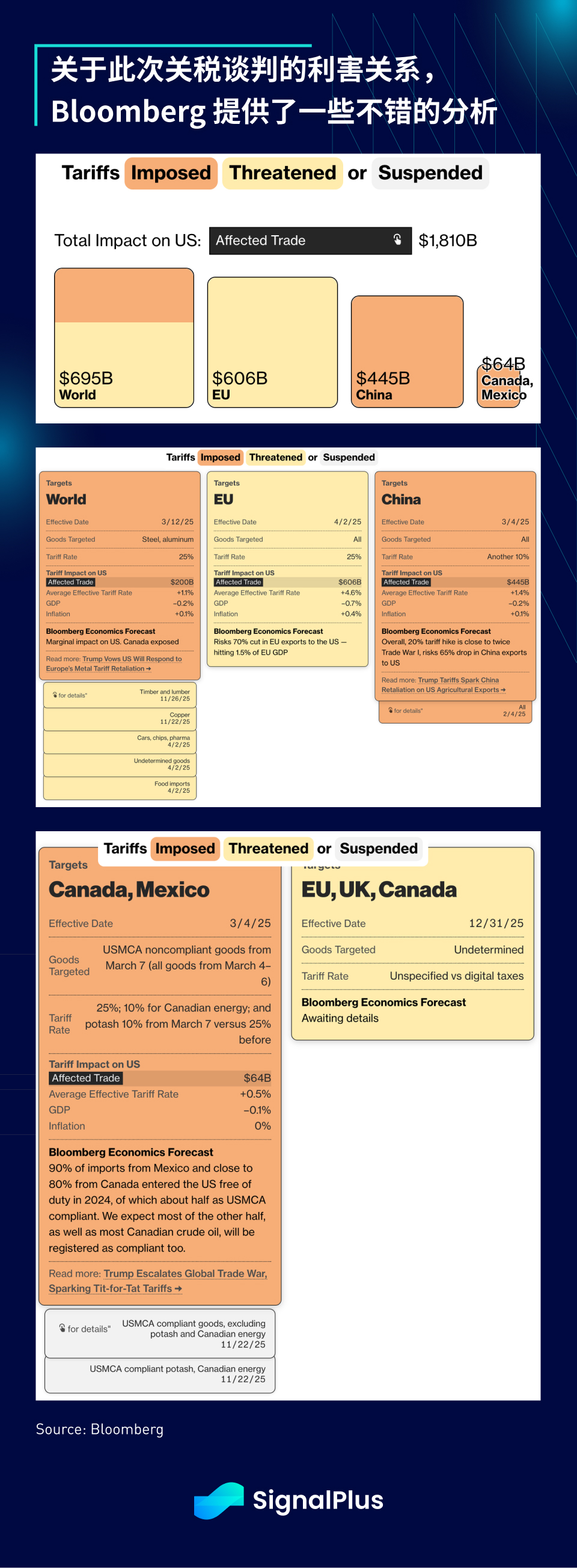
Regardless of the final outcome of trade negotiations, market sentiment has already been damaged, with tariff-related topics dominating corporate earnings calls this year. Stocks highly correlated with trade have dropped about 15% since their January peak, while momentum stocks have experienced the most severe pullback in nearly 40 years, erasing two years of gains in just three weeks.
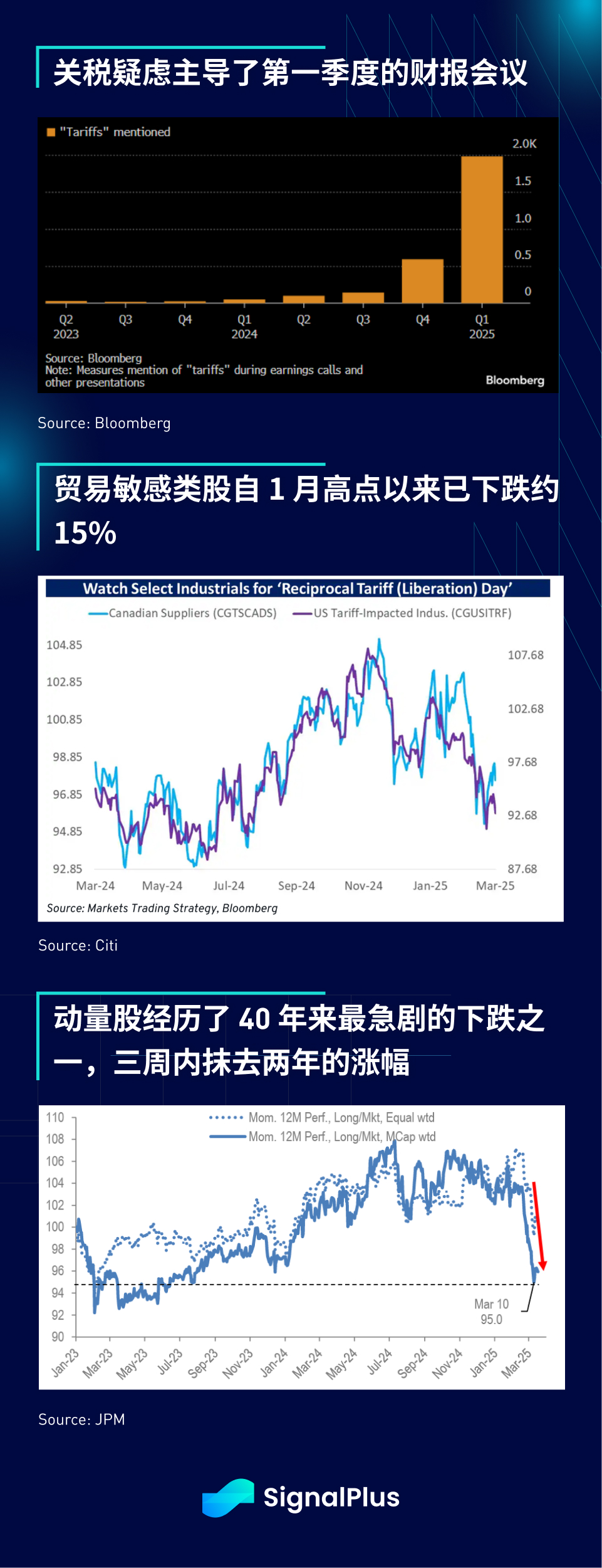
In response to this situation, professional fund managers are exiting U.S. stock positions at an unprecedented pace, while Europe, the UK, and China have become the biggest beneficiaries due to their fiscal policy outlook.
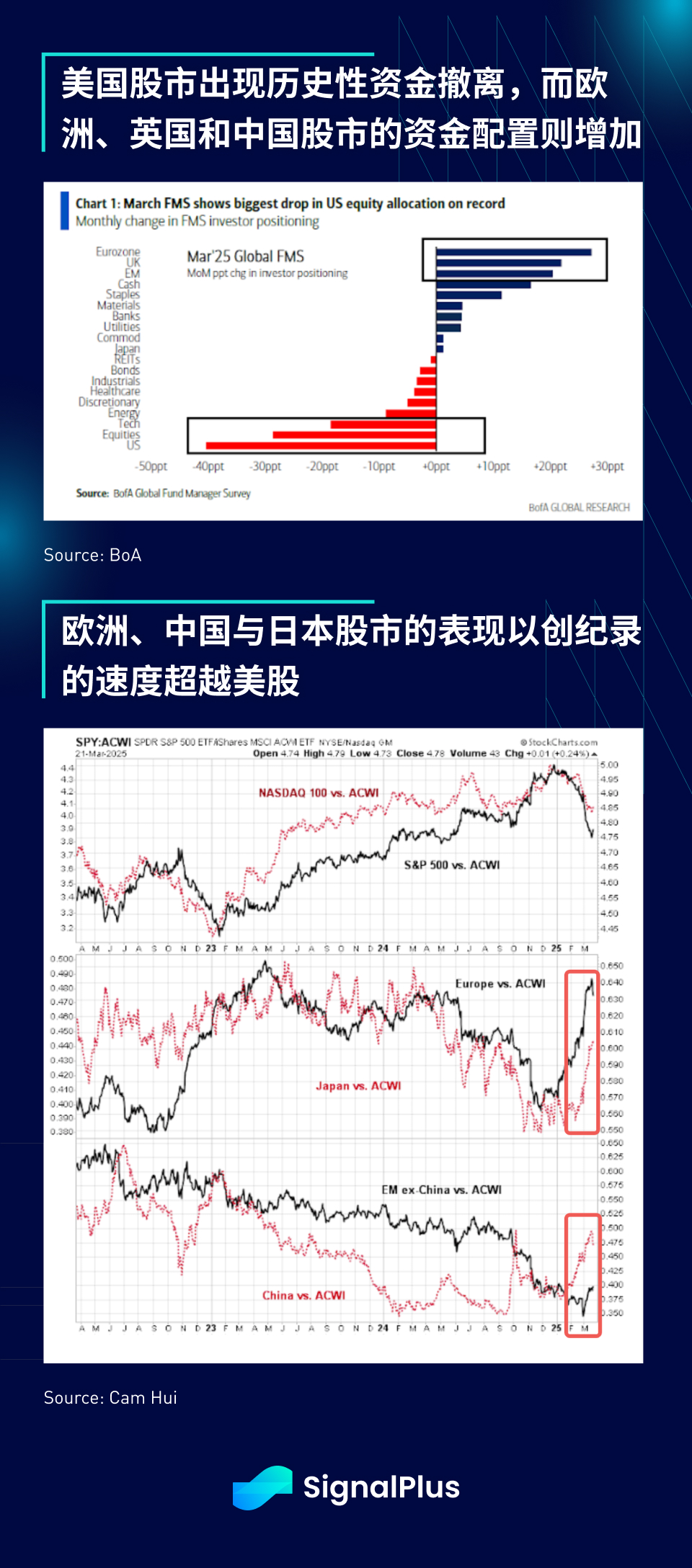
Similarly, in terms of positioning, fund managers are concentrating on "low volatility" strategies at an unprecedented speed, with the performance of this factor rising to above the 92nd percentile historically, indicating that funds have shifted to extremely defensive positions.
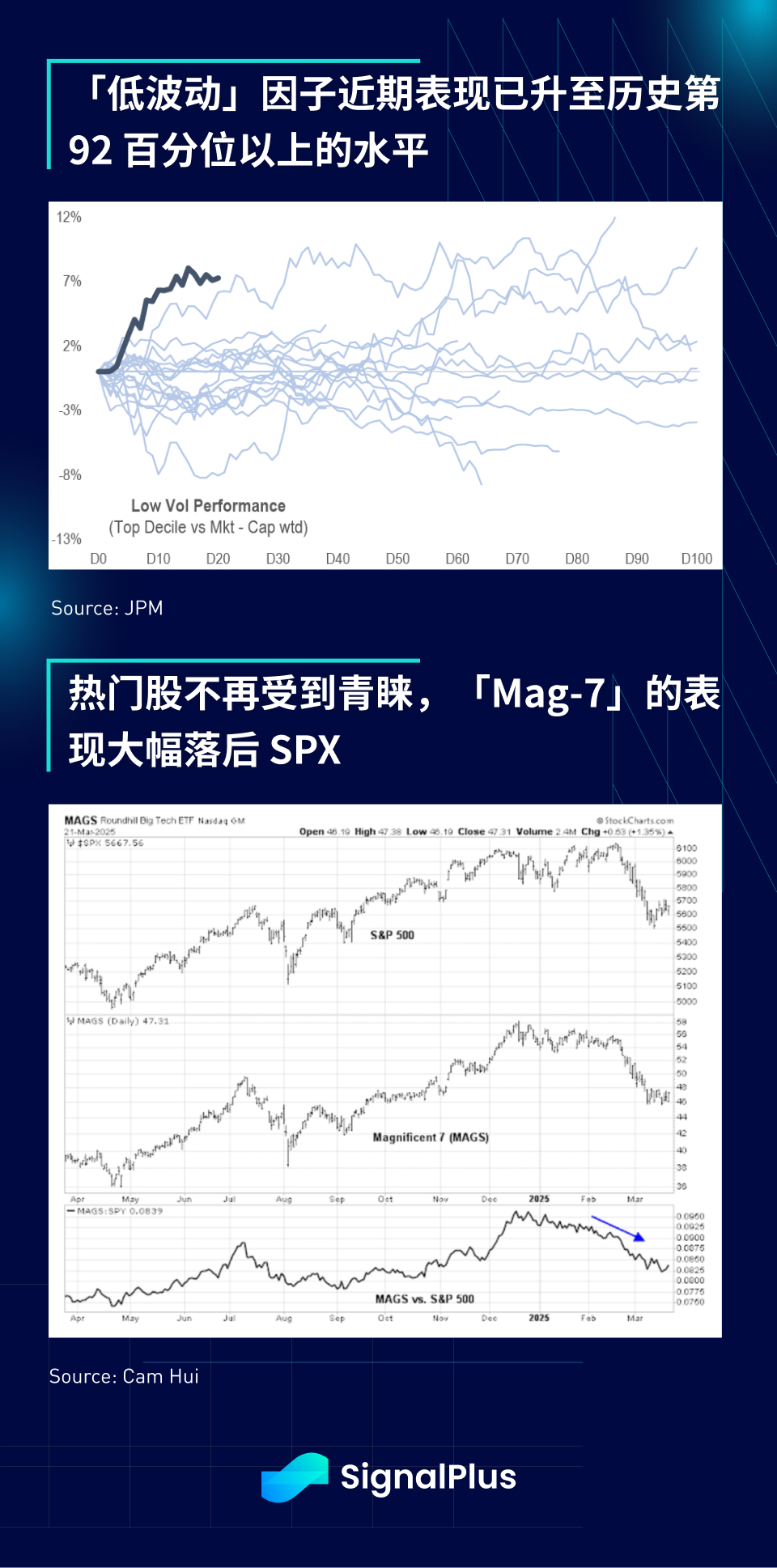
One positive factor is that retail investors are still holding onto their stock positions, even adding to them during recent declines, with bullish options trading volume and margin account balances remaining at high levels. Over the past few years, retail investors have often outperformed professional funds; will this strength continue?

Overall market sentiment remains low and in an extremely oversold state, laying the groundwork for a potential rebound in risk assets in the short term. Google searches for "recession" are also nearing multi-year highs (similar to during the pandemic or financial crisis), further supporting the possibility of a relief rebound in the short term.
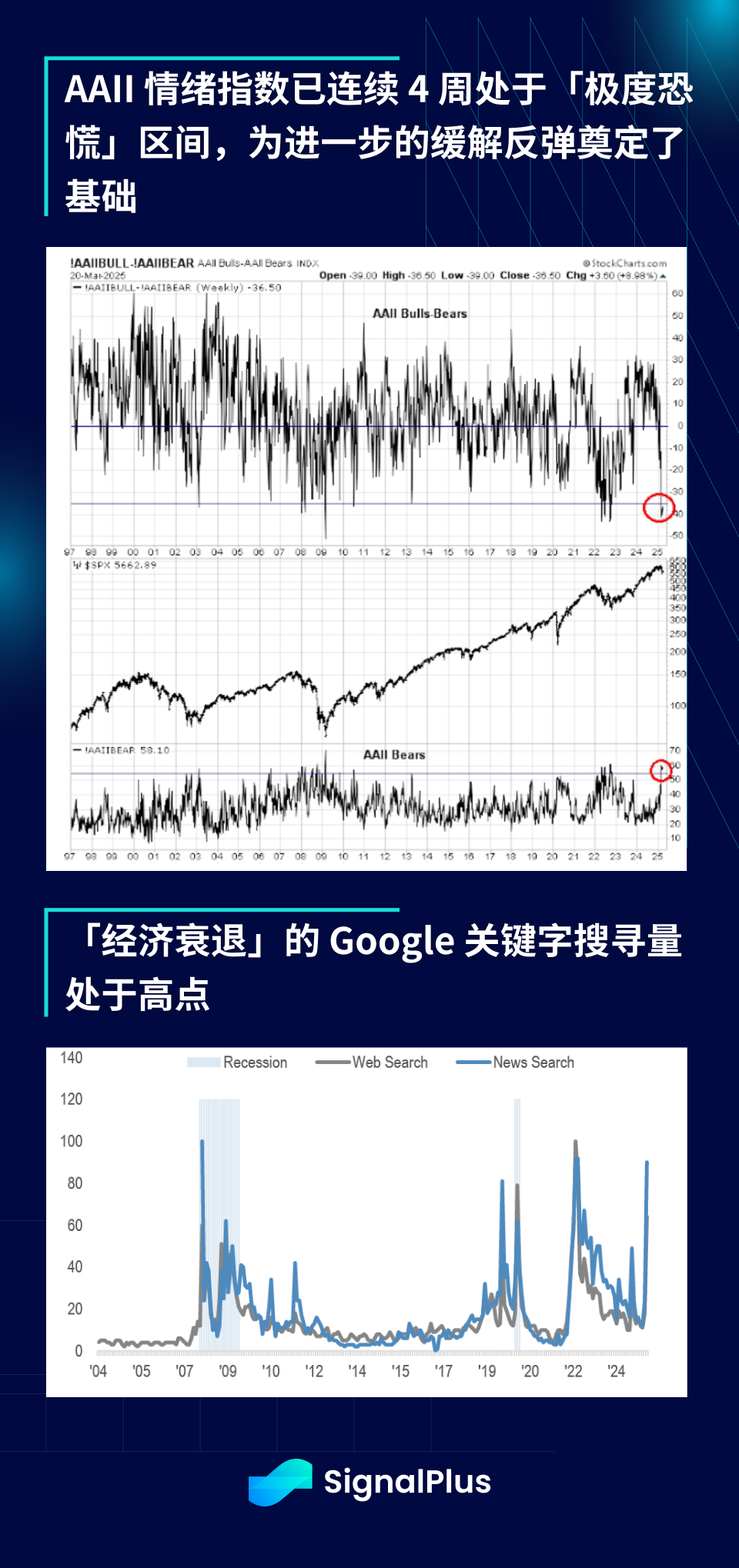 Most importantly, the hard economic data indicators in the U.S. remain robust, contrasting sharply with the market's soft sentiment indicators, suggesting that the market's reaction to the current weakness may be overstretched. Over the past few years, macro observers' assessments have often been more pessimistic than the actual economic situation, and we believe that the fundamentals of the U.S. economy remain much stronger than the market fears.
Most importantly, the hard economic data indicators in the U.S. remain robust, contrasting sharply with the market's soft sentiment indicators, suggesting that the market's reaction to the current weakness may be overstretched. Over the past few years, macro observers' assessments have often been more pessimistic than the actual economic situation, and we believe that the fundamentals of the U.S. economy remain much stronger than the market fears.
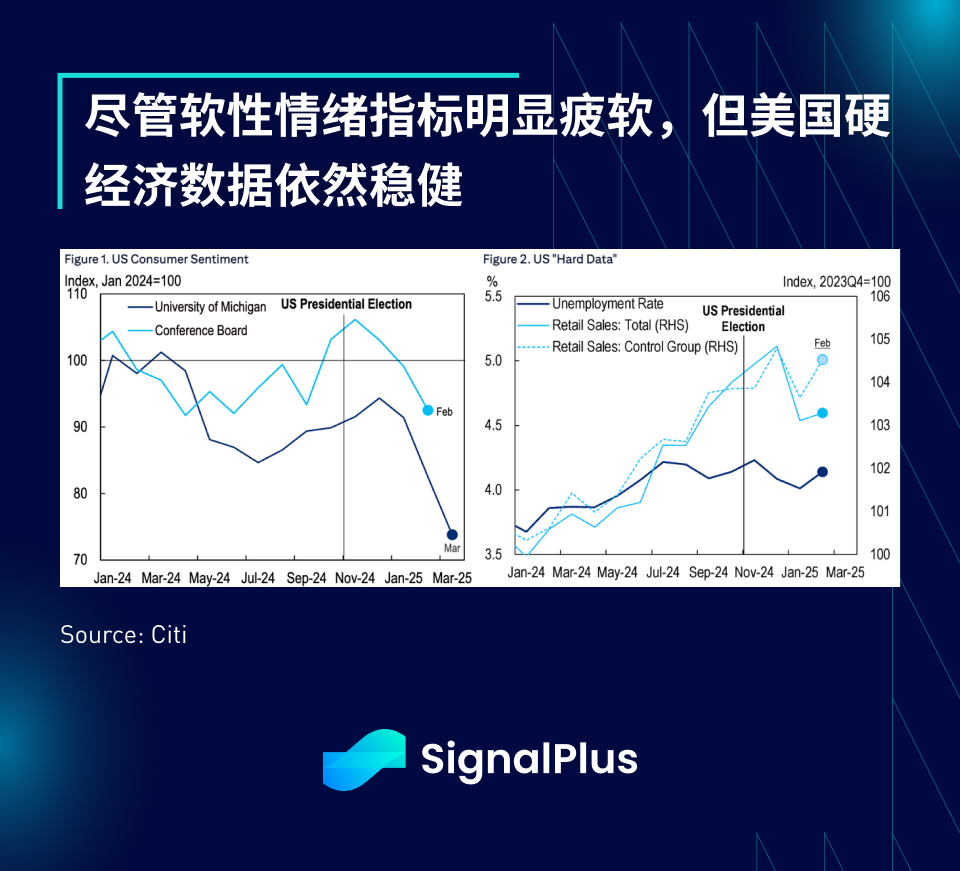
In the cryptocurrency space, the market has also been relatively calm over the past week, with prices mostly fluctuating within a range, rebounding alongside U.S. stocks from recent lows. A recent survey by Bank of America on crowded trades found that after recent capital outflows from the U.S. stock market, cryptocurrency bulls have also seen a similar decline. ETF inflows have been positive for six consecutive trading days, although the volume remains sluggish.


From a technical perspective, prices remain in a downtrend but are currently stabilizing near key support levels, with ETH temporarily holding above the 2022 range highs, and the next important support level around 1500.
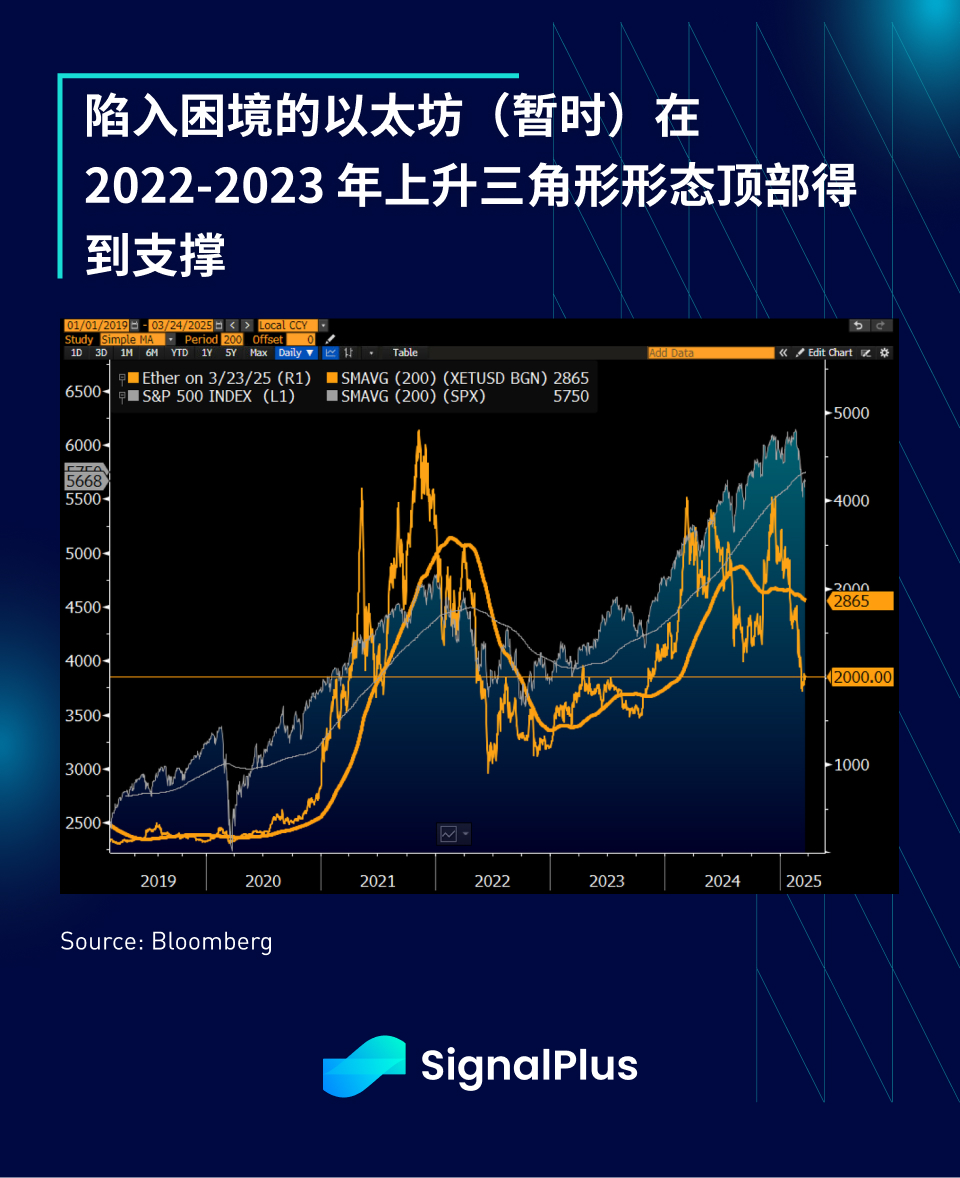
As an additional observation, Bloomberg has uncovered an interesting pattern: the price of DOGE has shown an astonishingly synchronized movement with the BTC/gold ratio over the past two years. We make no comments on its trading significance or logical explanations; this industry's most representative meme coin is left for readers to appreciate the coincidence or insights.

Finally, despite the recent price pullback, we still believe that 2024 will be a key breakthrough year for the virtual asset industry, primarily benefiting from a more relaxed regulatory environment, optimistic legislative expectations, and the continued expansion of mainstream adoption. The most representative cases are the recent major mergers and acquisitions involving U.S. cryptocurrency giants: Kraken announced its acquisition of NinjaTrader for $1.5 billion, officially entering the traditional futures market; while Coinbase is reportedly in talks to acquire Deribit, the world's largest cryptocurrency options exchange.
We believe that as cryptocurrencies gradually become a major asset class for mainstream investors, we are approaching a critical turning point in this growth journey. In the foreseeable future, cryptocurrency options trading, market clearing mechanisms, new stablecoin frameworks, and interest rate curves will thrive, supported by a new wave of institutional participants and professionals, elevating the entire industry to new heights.











